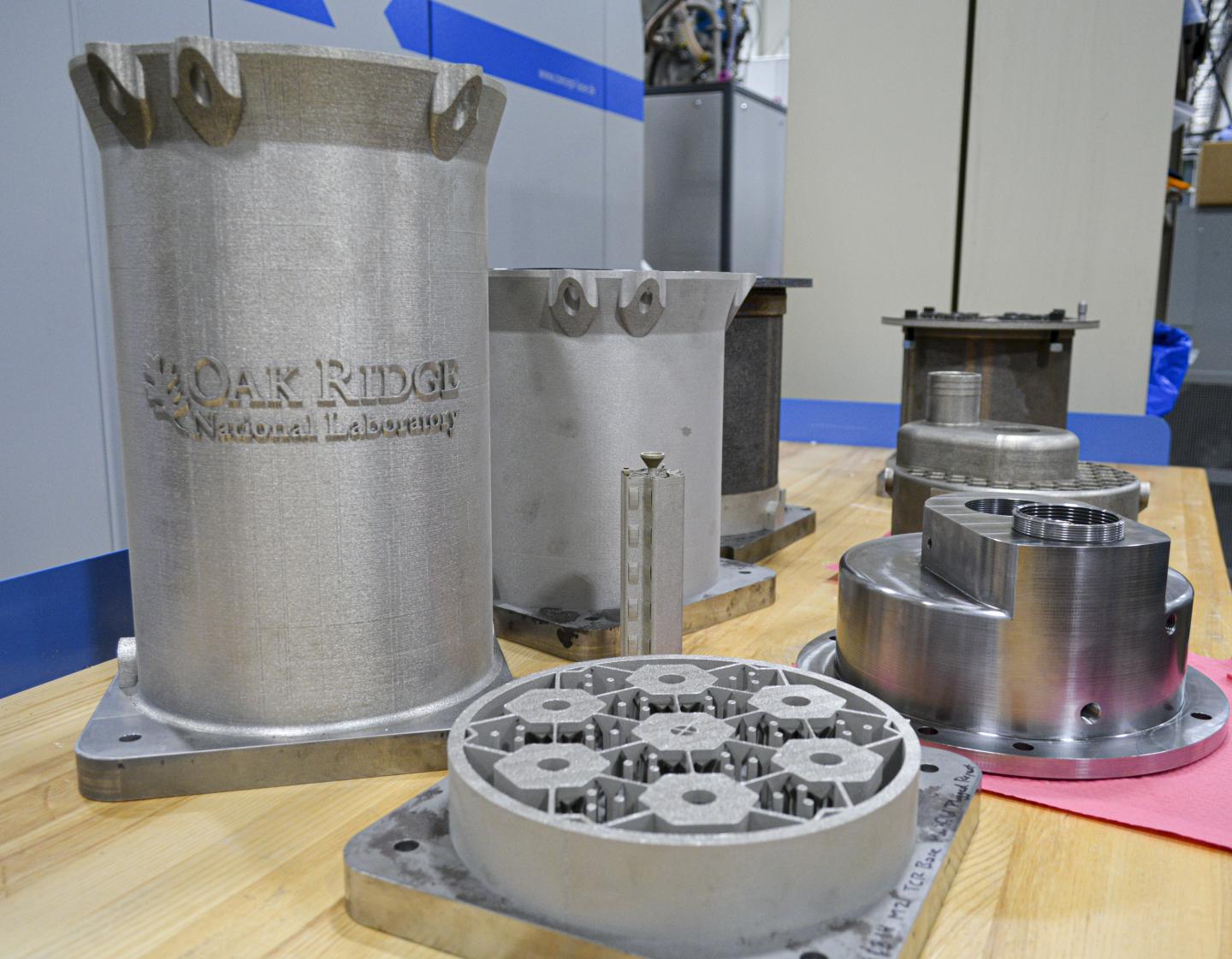Researchers at the US Department of Energy (DOE)’s Oak Ridge National Laboratory (ORNL) are developing a nuclear reactor core using 3D printing.
As part of its Transformational Challenge Reactor (TCR) Demonstration Program, which aims to build an additively manufactured microreactor, ORNL has refined its design of the reactor core, while also scaling up the additive manufacturing process necessary to build it. Additionally, the researchers have established qualification methods to confirm the consistency and reliability of the 3D printed components used in creating the core.
“The nuclear industry is still constrained in thinking about the way we design, build and deploy nuclear energy technology,” comments ORNL Director Thomas Zacharia.
“DOE launched this program to seek a new approach to rapidly and economically develop transformational energy solutions that deliver reliable, clean energy.”

Oak Ridge National Laboratory and 3D printing
ORNL is sponsored by the U.S. DOE, and conducts scientific programs that focus on materials, neutron science, energy, high-performance computing, systems biology and national security. It is administered, managed, and operated as a federally funded research and development center under a contract with the DOE.
Much of the lab’s research activities, projects and partnerships fall within the field of additive manufacturing. For example, ORNL is currently in a five-year cooperative research and development agreement (CRADA) with 3D printer OEM GE Additive. Working together, the two entities are focusing on driving industrialization and adoption of additive manufacturing technology.
Furthermore, ORNL recently entered into CRADAs with New York-based software company nTopology and French 3D printer provider AddUp to develop advanced additive manufacturing capabilities.
The laboratory is also collaborating with 3D printer provider ExOne to advance binder jet 3D printing technology. Working with ExOne, ORNL has developed a method for 3D printing aluminum-infiltrated boron carbide (B4C), a material used to make components for neutron imaging.

The Transformational Challenge Reactor Development Program
With significant expertise in additive manufacturing and nuclear science, ORNL seeks to use 3D printing to build a nuclear reactor core in its TCR program.
According to the World Nuclear Energy Association, nuclear energy provides nearly 20 percent of America’s electricity supply. However, by 2055, ORNL explains that all current nuclear reactors based on light water technology will likely retire due to expiring licenses. Additionally, the US has only built one new nuclear power plant in the last 20 years due to high costs and decades-long construction times using technology that was originally pioneered in the 1950s and ’60s.
As such, the TCR initiative was launched by ORNL to build a nuclear reactor core using the latest scientific advancements, while also enabling the nuclear industry to adopt modern technology approaches. This includes using additive manufacturing, advanced materials and integrated sensors and controls to improve optimization and reduce cost. Partners on the program include Argonne and Idaho National Laboratories, and industry members.
“We have been aggressively developing the capability to make this program a reality over the last several months, and our effort has proven that this technology is ready to demonstrate a 3D printed nuclear reactor core,” explains Kurt Terrani, the TCR technical director. “The current situation for nuclear is dire. This is a foundational effort that can open the floodgates to rapid innovation for the nuclear community.”

ORNL aims to build the nuclear reactor core by 2023. Part of the objective is to establish new methods in reactor design, manufacturing, licensing and operation as well. Thus far, the TCR program has completed several foundational experiments including selection of a core design, and a three-month demonstration of additive manufacturing, showcasing the technology’s ability to quickly produce a prototype reactor core.
Now, ORNL researchers are focused on refining the selected design and processes to ensure the production of an optimal and reliable energy system. To do so, the team is monitoring and assessing the additive manufacturing process to establish real-time qualification of the 3D printed material through artificial intelligence. The TCR program will also create a digital platform that will help in handing off the technology to industry, aiding in the adoption of additively manufactured nuclear energy technology.
“The entire TCR concept is made possible because of the significant advances in additive manufacturing process technology,” Terrani adds. “By using 3D printing, we can use technology and materials that the nuclear community has been unable to capitalize on in the last several decades. This includes sensors for near autonomous control and a library of data and a new and accelerated approach to qualification that will benefit the entire nuclear community.”
The nominations for the 2020 3D Printing Industry Awards are now open. Who do you think should make the shortlists for this year’s show? Have your say now.
Subscribe to the 3D Printing Industry newsletter for the latest news in additive manufacturing. You can also stay connected by following us on Twitter and liking us on Facebook.
Looking for a career in additive manufacturing? Visit 3D Printing Jobs for a selection of roles in the industry.
Featured image shows 3D printed components for the prototype reactor. Photo via Britanny Cramer/ORNL/US Dept. of Energy.


